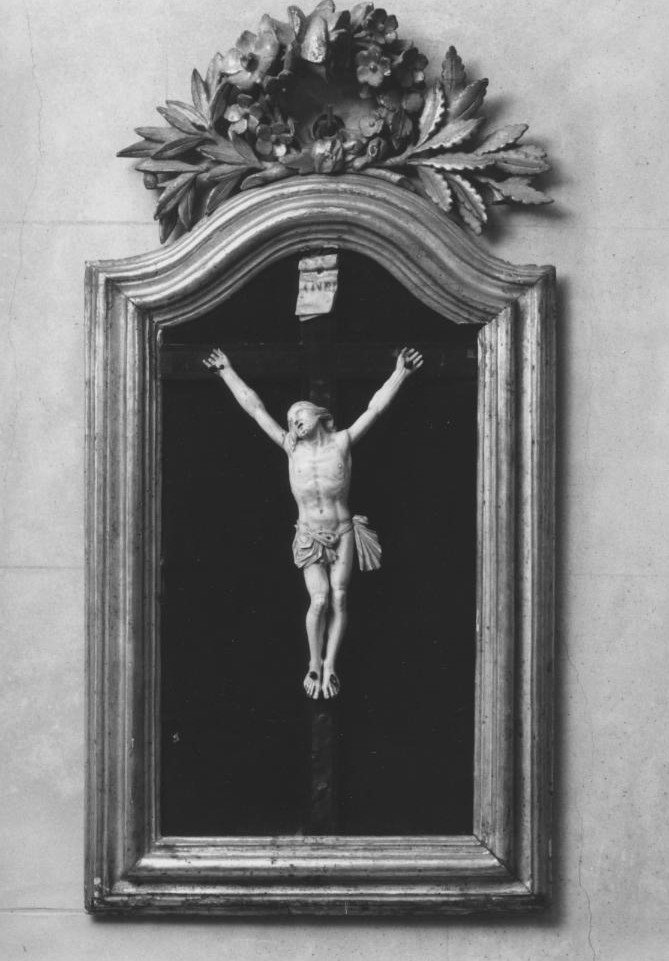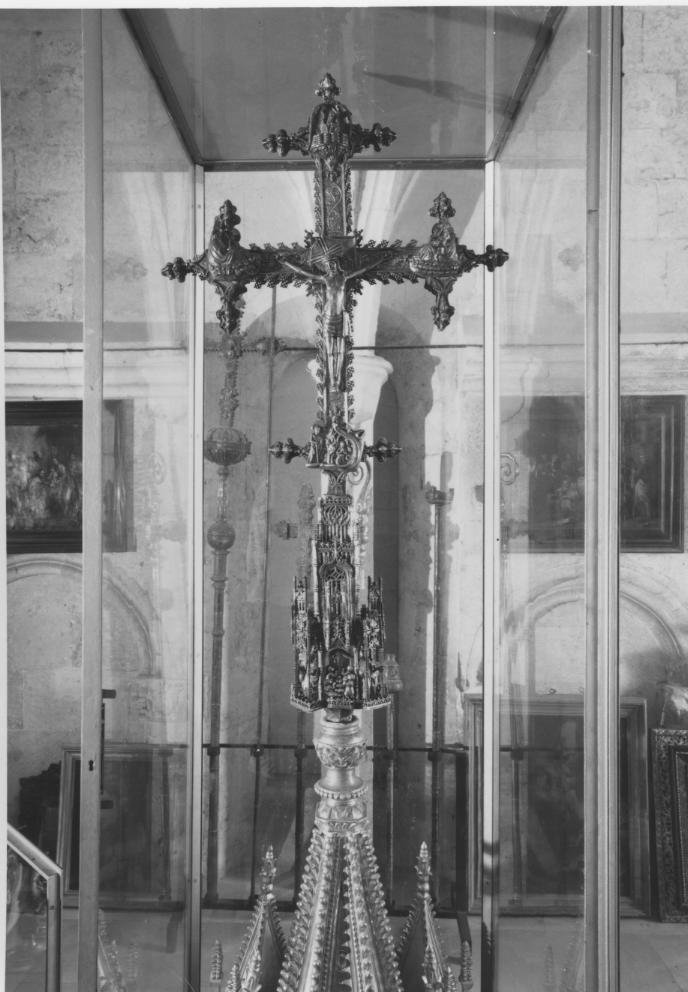Adjacent to the Oratory of the Souls of Purgatory, it stands on the longest side of Piazza San Giacomo in the Villanova district.
The oratory was built between 1665 and 1667 above a previous hall built in two phases, in 1629 and 1641-1645, on the ruins of the cemetery loggia adjacent to the parish church of San Giacomo, after the Confraternity of the Holy Christ was founded in 1616, which in the same year was merged by Paul V to the sixteenth century of the Most Holy Crucifix of Saint Marcello of the Friars Served in Rome. Between 1667 and 1682, the building was used exclusively as a meeting room for the confreres and only in 1683 did Mass begin to be celebrated there. In 1697-1698, adjacent to the right side of the oratory, the chaplain's home was built. In the first quarter of the eighteenth century, the building underwent renovations made necessary by the changed needs of worship, which imposed the inversion of the liturgical axis: the altar then occupied the current raised presbytery and determined the construction of a new sacristy, placed laterally to it. In 1705, the choir and the staircase leading to the presbytery were erected. The oratory was damaged during the 1943 bombings, mainly at the sacristy, completely rebuilt in 1954.
The building, with a rectangular plan, is single-naved and barrel-vaulted and set on a frame with a strong projection; the left wall of the classroom houses three niches used to store simulacra; the roof is covered with tiles. The façade, built in 1665-1667, is divided by a marcapian frame above a frieze with phytomorphic high-relief ornament concluded laterally by rampant lions, two of which, when faced, also appear in the center of the decorative motif. The projecting mixtilinear frame of the tympanum is connected by means of a shelf to an additional crowning “like a carabiniere lamp”, that is, a doubly inflected arch, in this case ending in volutes; the tympanum houses a quadrangular opening lined with lithic rosettes. The lower part of the prospectus is punctuated by four pilasters concluded by Corinthian capitals that frame two portals with a broken curvilinear tympanum. The presence of the double entrance, probably determined by religious requirements, also appears in other oratories, as well as in binavated churches, an expression of the Sardinian Romanesque style of the first half of the 12th century. Two small elliptical openings above two shelves illuminate the choir leaning against the counterfaçade and help to embellish the rich ornament of the façade.
The members of the Brotherhood, to which women could also be admitted since 1649, wore white tunics garnished with black silk bands on the sleeves and neck; the robe, equipped with a hood and a white silk belt, also bore a canvas sign on which were painted the cross, the crown of thorns, the keys and the motto “Hic abscondita est fortitudo nostra”, probably to signify the inner strength deriving to the brothers from their faith in the Crucified Christ. The association ceased its activities at the end of the nineteenth century, and was then refounded in the following century. It is still fully active in the rites officiated during Holy Week, when, on the occasion of Good Friday, the dead Christ is carried in procession from the oratory to the church of San Lucifero.
Bibliography
G. Spano, Guide to the city and surroundings of Cagliari, Cagliari, Timon, 1861;
F. Corona, Guide to Cagliari and its surroundings, Bergamo, Italian Institute of Graphic Arts, 1894;
M. Cabras, “The speakers of the 'Holy Christ' and the 'Souls' in the Villanova district of Cagliari”, in Technical Bulletin of Sardinian Engineers and Architects, XVI, 1966, fasc. 3-4;
R. Figus - M. Pintus, “Historical-constructive events of the oratory of the Holy Christ in Cagliari”, in Art and Culture of the 17th century of the 18th century in Sardinia. Proceedings of the National Congress, Naples, Italian Scientific Editions, 1984;
M. Pintus, “Architectures”, in F. Masala - D. Mureddu - M. Pintus, Cagliari Historical districts. Villanova, Cinisello Balsamo, Silvana, 1991;
M.C. Cannas, “The parish church of San Giacomo di Villanova in Cagliari. Construction events from the 15th to the 17th century”, in XIV Congress on the History of the Crown of Aragon. The Crown of Aragon in Italy (sec. XIII-XIV): 4. Meeting of cultures in the Catalan-Aragonese domain in Italy, V, Communications, Pisa, ETS, 1998.
Content type:
Religious architecture
Province: Cagliari
Common: Cagliari
Macro Territorial Area: South Sardinia
POSTAL CODE: 09125
Address: piazza S. Giacomo, 6
Update
Where is it
Images

Year : 1799

Year : 1490
Results 2 of 123920
View AllVideo
Comments